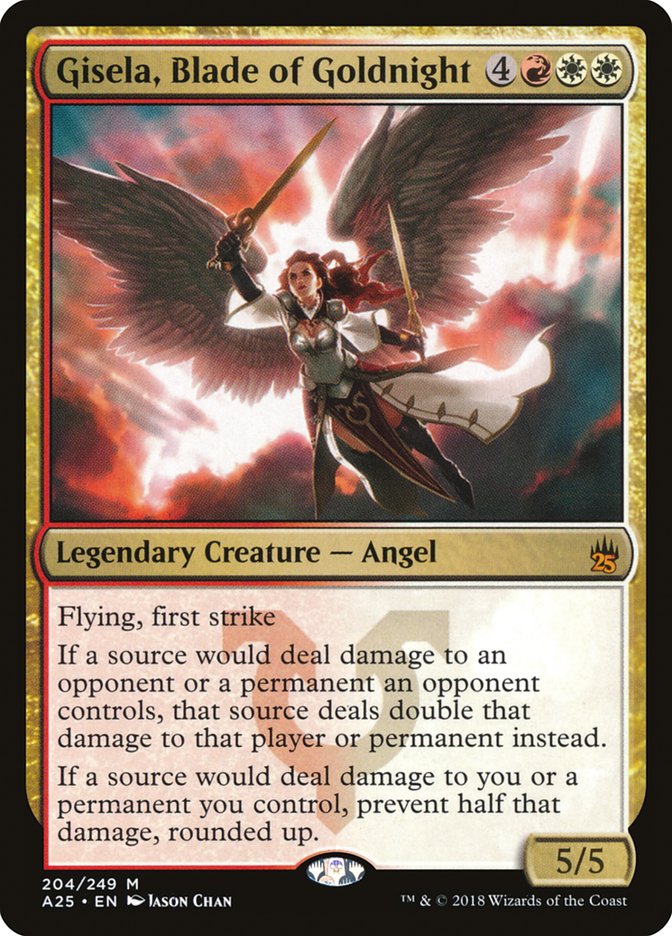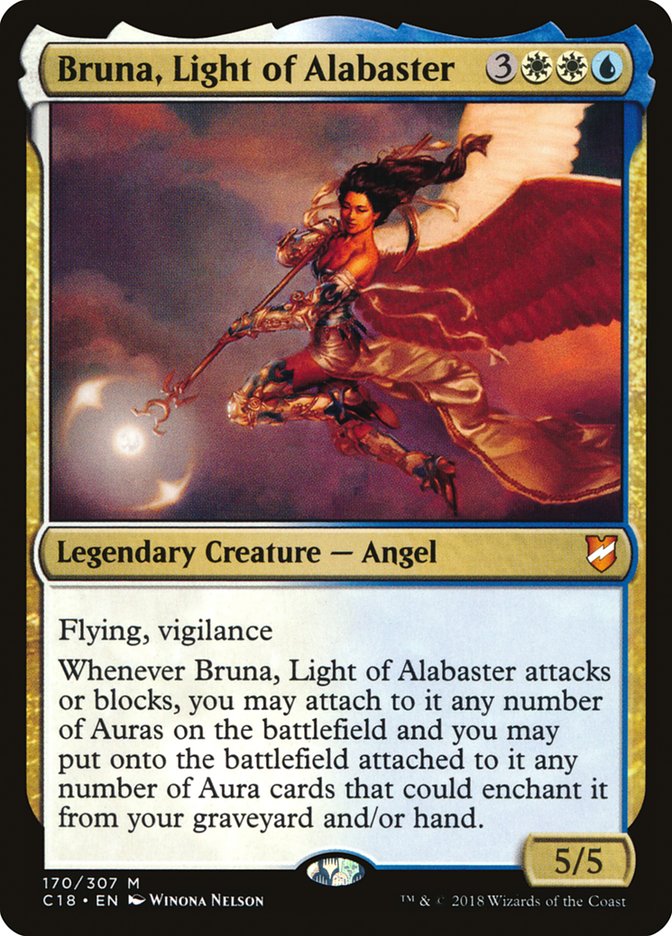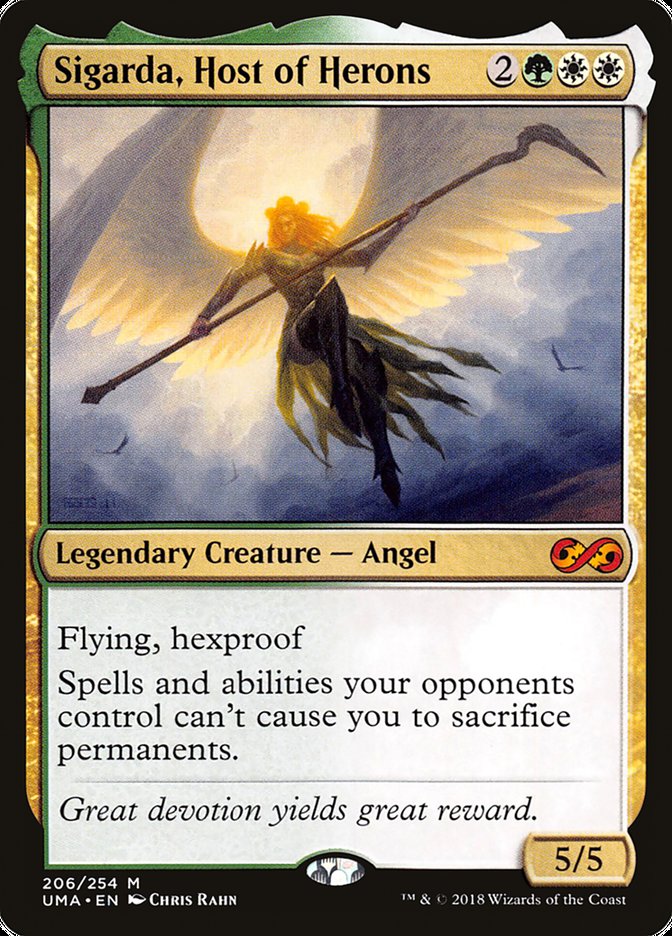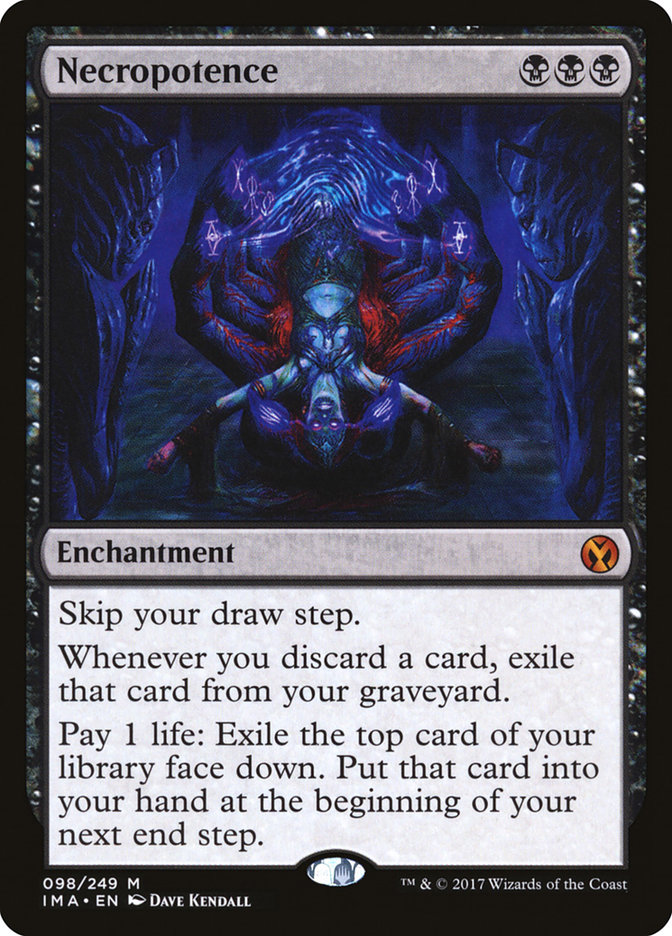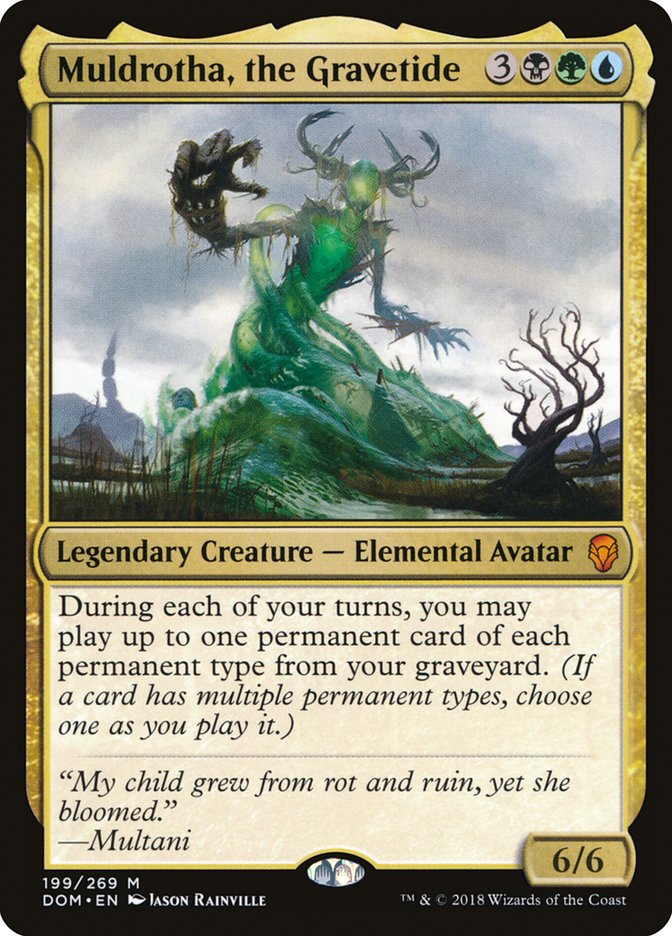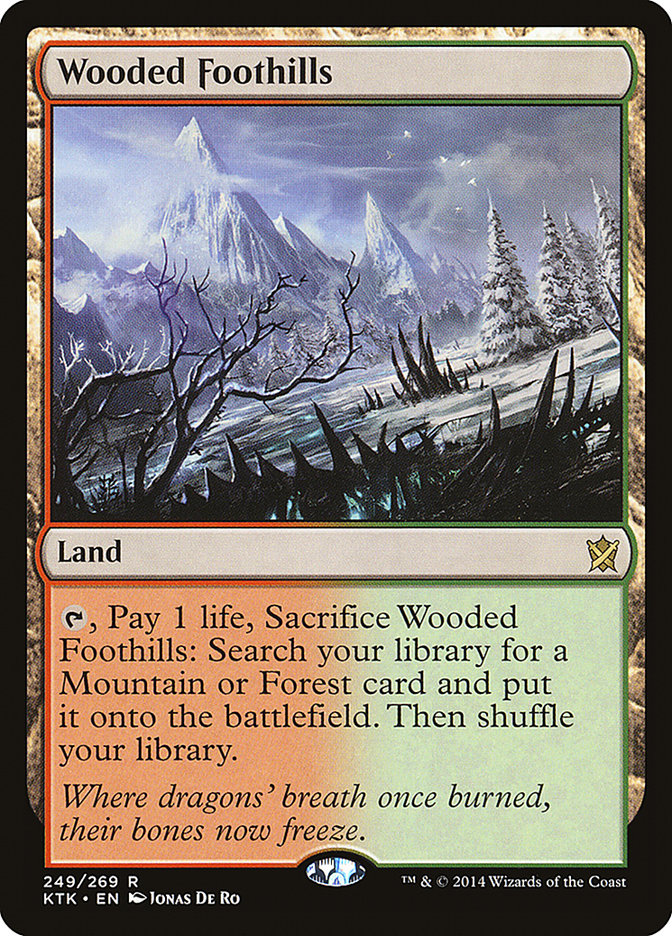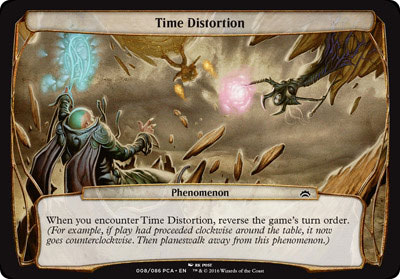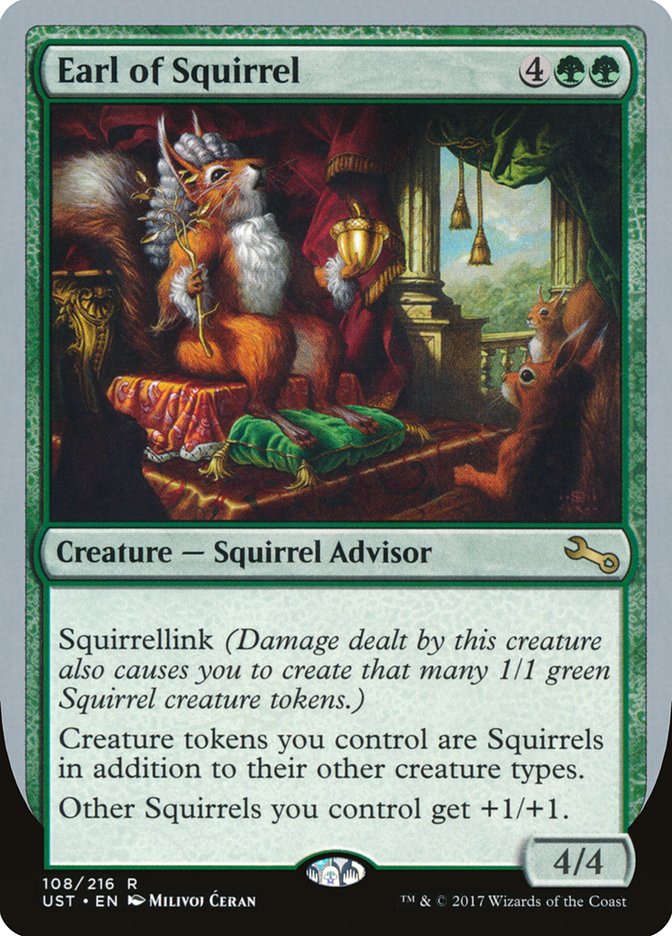On a recent episode of Command Zone, Josh and Jimmy did Part 2 of their “Commander Summit,” where they asked a bunch of luminaries from around the format a number of questions. One of the more open-ended questions was “If you could change any rule in Commander, what would it be?”
It’s an engaging thought exercise. Obviously, if we thought that a rule needed changing, we’d change it. That said, we don’t commonly sit around thinking about how we might throw some upheaval into the format. What I’ll do today is talk about some of the things that came up during the conversations during that episode. I’d like to explore both how the idea might work and how it might not. Again, nothing here is a path the Commander Rules Committee is considering going down, but there’s value in thinking about how we think. Firing up the crucible of ideas will burn the unworthy and galvanize the strong. Plus, it’s just fun to think outside the box.
Unified Commander Damage
The idea of unified commander damage is that instead of tracking damage from individual commanders, it would all add together. If I took four damage from Toby’s commander and then six from Scott’s, I’d be at ten. Someone commenting on the podcast made the analogy that it would be like infect in that regard. There would be a number, probably higher than 21, and if you hit that number, you’d lose. For the sake of this argument, let’s call the number 30.
The argument for unified commander damage is how clumsy the current rule is when it comes to bookkeeping. One number is easier to track than three. Yes, one number is easier, but it’s not like three is a burden that Magic players are incapable of. One isn’t so much easier than three.
The other argument for it is that you couldn’t reset the clock, as it were, by eliminating a player. Currently, if you’ve dealt twenty commander damage to me and no other player has, I buy myself a great deal of time by killing you before you get that last bit in. With unified damage, that twenty damage would still be there, and the other players would need to do only ten more to get rid of me.
To approach how I’d make unified commander damage work, I’d think about what happens with commander damage now. Three hits from any significantly large commander are lethal. Would we want it to require four or maybe five hits? Making unified commander damage work certainly undercuts individual Voltron/big commander strategies. Is 28 a better number than 30, since it’s one extra hit from the baseline multiplier? Or are the Voltrons big enough that it’s still three or maybe even two hits?
I’d also want to look at who/which decks the unified commander damage impacted the most. It seems that it hurts defensive decks more because, as I mention above, there’s no reset to the clock. That’s not to say that taking a little away from the pillow fort decks is bad, since it generates action, creates movement. As it exists now, there’s no real incentive to needle away at the highly defensive player. With unified commander damage, there would be. I believe there’s an argument that it would give combo decks a little less time, which doesn’t seem to hold water. Sure, if the combo deck isn’t tutoring up and winning quickly, they have less time. If they are, there’s no way to get enough unified damage through in time, even if they’re ganged up on.
Assessment: While it would be a major change, I don’t see unified commander damage as format-breaking or -warping. I’m wouldn’t rush into giving it serious consideration, but I wouldn’t mind testing it out, if for no reason than to shake up things a bit for my local group. If you give it a try, please let me know how it went (and so I don’t have to repeat myself with every section, if you give any of these ideas a try, we’ll be happy to hear the results).
Start with Monarch
This one is a favorite of CAG member Shivam Bhatt. To be fair, Shivam loves life, so lots of things are going to end up being favorites of his. Starting with the monarch involves having the emblem in the middle of the table, and when someone draws first blood, meaning dealing the first combat damage, they become the monarch and the mechanic is activated for the rest of the game. It’s a pretty straightforward idea.
It’s clear that introducing the monarch mechanic from the get-go greases the skids of action. The monarch being active creates an incentive for people to attack as opposed to sitting back. The monarch is a compelling mechanic. The first-level thought is to just battle in order to get the extra card. Of course, when you’re wearing the crown, you become the target. You have to choose your spots. It also creates some politics. “Hey, let me hit you for one so that I can be the monarch.”
In considering such a rules change, my first question is about the cards that already have the mechanic on them. Have we tactically devalued them or are we offering even more incentives to play them? Seems like the latter, since most of them can give you the monarch without going into combat.
Having the monarch certainly privileges aggressive decks, which is a big shiny feather in its cap. If one of the complaints about the format is that games take too long, rewarding players for doing even small amounts of damage will speed it up. You’d see Solemn Simulacrum getting in there instead of just sitting back, waiting to block and draw a card.
Assessment: This is the one that I’m most interested in trying in my own group. It’s a small change that opens quite a few strategic possibilities.
30 Life
Changing the life total to 30 is a very common suggestion in order to speed up games. I had always shrugged at the idea on the surface level, but then I gave it more thought. It’s not that it speeds up games, it’s how it speeds up games.
30 life puts combo decks on a shorter clock. Currently, players have time to set up, draw, tutor, and get all their pieces together, knowing that the only important life point is the last one. I’m not sure it changes how many players are still willing to play fast combo decks. It would just mean that they might lose another few percent games. I certainly don’t see it as a factor in making them choose another play style.
The other part of Jimmy and Josh’s discussion involved using the additional life as a resource. Not only does 40 life buy you time, but when you can trade life for resources, like with Necropotence, the more you have, the more you can use. At 40, players are pretty cavalier about life loss. At 30, they might put more thought into having a shockland enter the battlefield untapped or continually playing their fetchlands with Muldrotha, the Gravetide. I’d consider this a minor factor not a major one regarding one or two life at a time. It’d be a rather large factor when talking about trading life for cards. Ten more shots into your ever-thinning deck seriously increase your odds of finding your operative cards.
One argument to not changing it is that 40 life is foundational to Commander. It’s pretty easy to reject the argument, since in the beginning, life totals were 200 divided by the number of players in the game. We later wanted to simplify and 40 was the number we thought most reasonable.
Assessment: It’s another one that I’d be happy to give a whirl to, but there’d have to be some seriously compelling evidence that it makes the format better before considering a change.
Off-Color Fetches
This is a topic that’s been hashed and re-hashed since fetches originally came out. The problem with writing a rule to prevent you from playing off-color fetches (like Wooded Foothills in your mono-green deck) is that a clean rule would also prevent you from playing River Boa in that same deck.
In order to just get the fetches and not everything else, the rule would be either pretty convoluted, extremely wordy, or specifically mention the cards. Writing card names into a rule is really awkward. We’ve always felt as though it’s not worth the trouble. There are lots of people playing off-color fetches and we’re pretty sure it’s not ruining the format. While from a flavor standpoint we’d prefer that folks not, it’s just not that big of a deal.
Assessment: Don’t like it, but there’s not great of upside in the effort to try to fix.
Mitigating Going Last
Even if you’re playing casually, going last isn’t all that much fun. The earlier your turn is, the better position you’re in. In multiplayer formats, the player going first draws, giving them an extra advantage. Having them not draw the card sets them a little too far behind and it still doesn’t help the person going last. So what’s the answer? You can’t just give some advantage to Player 4, because then you just make Seat 3 the worst.
Some sort of scaling advantage would be the answer if I wanted to find one. Additional cards? Probably a bad idea. Stepped-up scry could be a good answer—like the person who goes second has scry 1, third scry 2, and fourth scry 3. There’s not much more between scrying and drawing that’s not too swingy.
A really crazy idea might be to reverse the turn order for Turn 2. Then again, that just leaves Player 2 with a long time between their Turn 2 and Turn 3, making them pretty vulnerable. The more I think about that one, the less I like it. There doesn’t seem to be a particularly balanced answer to this one, as much as I’d like to find something reasonable, although that scry idea might merit some testing.
Assessment: Still on the search for a positive solution. Confidence is not high.
Allowing Certain Un-Cards
Somewhere along the way, someone suggested that certain Un-cards wouldn’t be broken in the format. While that is certainly true, and there are a dozen or so that would be fun without breaking the format, messaging of this would be awkward and confusing. “This set is not legal, but these cards are” adding for the first time a list of cards that were specifically legal (as opposed to remarking on the banned ones).
In the end, Un-cards are the kinds of things that are better left for local groups. More so than for regular Magic cards, opinions swing wildly on both power level and fun factor of the silver-bordered cards. Unleashing them for a short period of time was okay (but even then, we had to say no to a bunch of them), but not likely in the big-picture best interest of a healthy format.
Assessment: Opens up too many problems to seriously consider.
Communication
We’re always searching for better communication, in all areas. Better communication from the RC to the players. Fostering better communication between players. Breaking down barriers to communication. To that end, I’ve engaged in what’s become a profitable discussion with some notable cEDH players (to include Jim from SpikeFeeders and Sigi from LabManiacs) about how we can better create and communicate the format’s acceptance of all play styles. I’ve said for a long time that we can’t make Commander all things to all people, but we sure can let it be for all people what they’d like it to be. We can continue to keep the format consistent with its internal vision while not alienating a percentage of the player base. How we’ll do that will come from the kinds of productive discussions we’ve already had and continuing them.
One of the other communication problems I think we’re having is actually defining what “competitive” means. To some, it means the highest power. To others, it means winning is by far the top priority. To still others, it’s restricted to tournament play. Of course, this exposes the fragility of labels, since they can mean shades of all three at the same time. If someone identifies as one and you mean another, they can get offended by your characterization, which has happened with a few things that I’ve said in the past despite my declared intention otherwise. Labels are useful sometimes as shortcuts, but unfortunately lots of subtle meaning can get lost. I’ll do my best going forward to explain more clearly what I mean when talking about this issue.
One of the realizations that’s helped those discussions move forward is that we’re not always easily binned into a strict casual/competitive dichotomy. We in the community exist more on a sliding scale; there are plenty of people who enjoy playing at multiple power levels and have decks that fit with a broad range, making Rule 0 even more significant. As we go forward, let’s focus not necessarily on where someone fits in the community, just on the fact that they’re a welcome part of it. I suspect we’ll get a lot more done.
Sheldon Menery’s Deck Database
Check out our comprehensive Deck List Database! Click each section for lists of all my decks.
Signature Decks
These are the decks that define my personal play style to the greatest degree and to some extent lay the original foundation of the format. They’re also the ones you’re most likely to see me bringing along to spell-sling at an event.
The Chromatic Project
The Chromatic Project started as an effort to build at least one deck of all 27 possible color combinations, which was expanded to 32 when we finally got four color commanders. There’s more than one of some combinations, mostly because I have a Temur problem, plus some partner combinations are too enticing to pass up.
Mono-Color
Guilds
Shards and Wedges
Four Color
Five-Color
Partners
The Do-Over Project
The Do-Over Project is the next step after the Chromatic—building a deck with each of the same Commanders, but not repeating any cards save for basic lands (props to Abe Sargent’s “Next 99” idea). The Do-Over Project is still ongoing because we keep getting saucy new sets with creative and colorful commanders to build new decks with.
If you’d like to follow the adventures of my Monday Night RPG group (in a campaign that’s been alive since 1987) which is just beginning the saga The Lost Cities of Nevinor, ask for an invitation to the Facebook group “Sheldon Menery’s Monday Night Gamers.”


